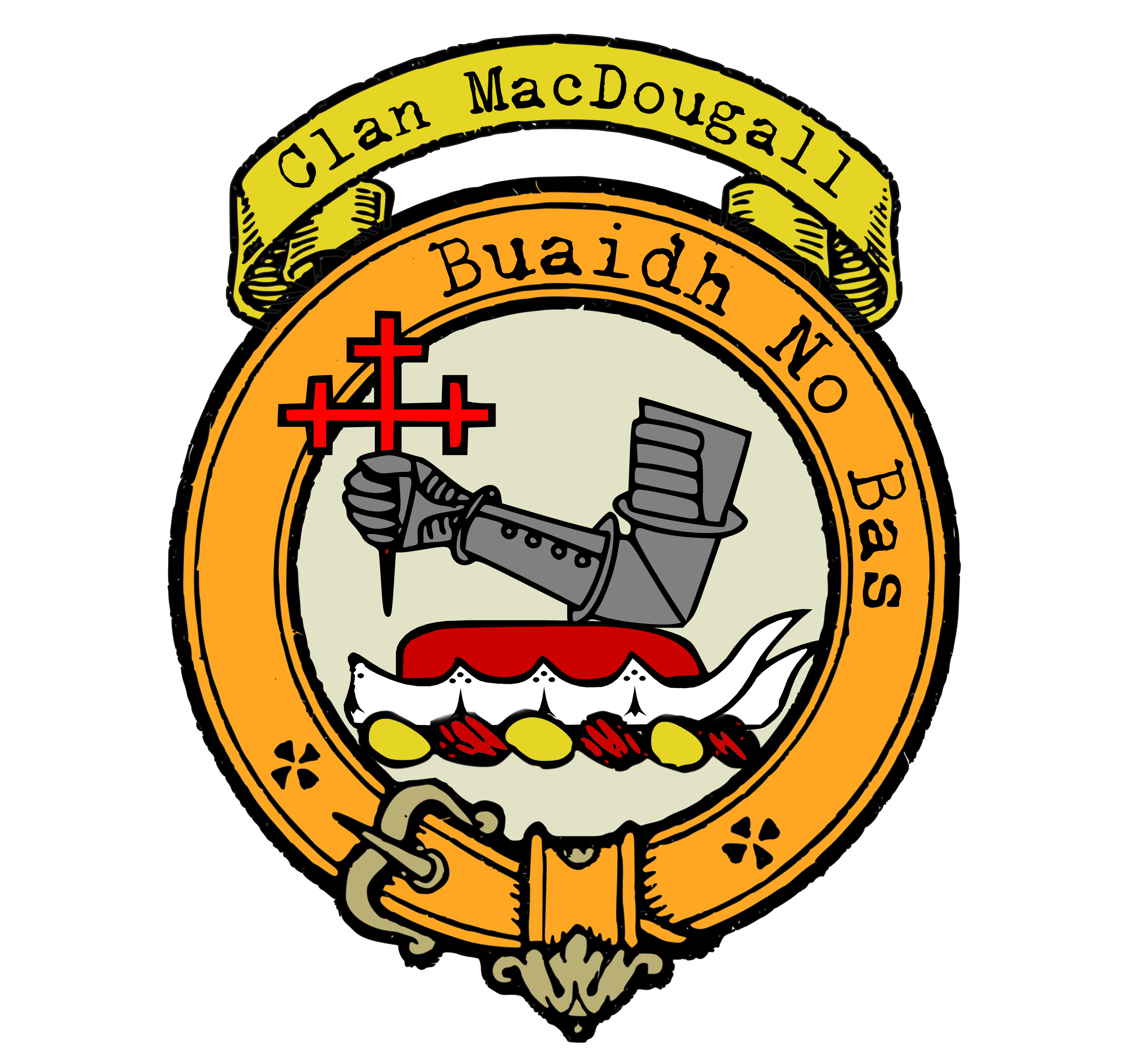Clan MacDougall
|
|
CREST: on a chapeau Gules furred Ermine, a dexter arm in armour embowed fessways couped Proper, holding a cross crosslet finchée erect Gules MOTTO: Buaidh no bsa TRANSLATION: To conquer or die VARIATIONS: McDougall |
 The origins of Clan MacDougall can be traced back to Dougall, the son of the legendary Somerled. Following his father’s death in 1164, Dougall inherited vast territories, including Argyll and numerous islands such as Mull, Jura, Tiree, and more. The name “MacDougall” is derived from the Gaelic “dugh-gall,” meaning “black stranger,” reflecting the Celtic heritage of the clan. Dougall’s royal descent was acknowledged by the king of Norway, and he proclaimed himself as the “King of the South Isles and Lord of Lorne.” The origins of Clan MacDougall can be traced back to Dougall, the son of the legendary Somerled. Following his father’s death in 1164, Dougall inherited vast territories, including Argyll and numerous islands such as Mull, Jura, Tiree, and more. The name “MacDougall” is derived from the Gaelic “dugh-gall,” meaning “black stranger,” reflecting the Celtic heritage of the clan. Dougall’s royal descent was acknowledged by the king of Norway, and he proclaimed himself as the “King of the South Isles and Lord of Lorne.”
Ewan, Dougall’s grandson, found himself torn between allegiance to the kings of Norway and Scotland. In 1263, when King Haakon of Norway planned an invasion of Scotland’s west coast, Ewan opted for neutrality. However, realizing that neutrality would lead to disaster, he attacked part of the Norse fleet near Mull, contributing to the Viking defeat at the Battle of Largs. Three years later, Norway ceded all of the Hebrides to Scotland, forever altering the balance of power. The MacDougalls’ influence in Argyll led to clashes with their rivals, the Campbells. In 1294, John Macdougall, known as the Lame, led the clan against the Campbells in a fierce battle at the Path of Lorn. Although Sir Colin Campbell perished, both sides suffered heavy losses. These conflicts marked the beginning of a long-standing feud between the two clans. The marriage of Sir Alexander Macdougall, the fourth chief, brought about a disastrous turn for the clan. His wife was the sister of John Comyn, who was slain by Robert the Bruce in 1306. This event ignited a blood feud between the MacDougalls and the Bruces, who had previously supported William Wallace and the cause of Scottish independence. King Robert was forced to retreat to Argyll after his coronation, and the MacDougalls ambushed him at Dalrigh. Although the king escaped, a treasured Celtic jewelry piece known as the “brooch of Lorne” was allegedly found on his abandoned cloak. Despite their initial setbacks, the fortunes of Clan MacDougall were partially restored when Euan Macdougall married a granddaughter of Robert the Bruce. While the MacDougalls never regained their island possessions, their mainland estates were re-granted by royal charter. Over time, the clan’s loyalty to the Stuart monarchy was tested, but they remained steadfast supporters. The twenty-second chief, Iain Ciar, fought in the Jacobite rising of 1715 at the Battle of Sheriffmuir, resulting in exile before eventually receiving a pardon in 1727. |
|
Citations:
|
|


Purchase @ Redbubble
Purchase @ Amazon.com
Purchase @ Amazon.co.uk
